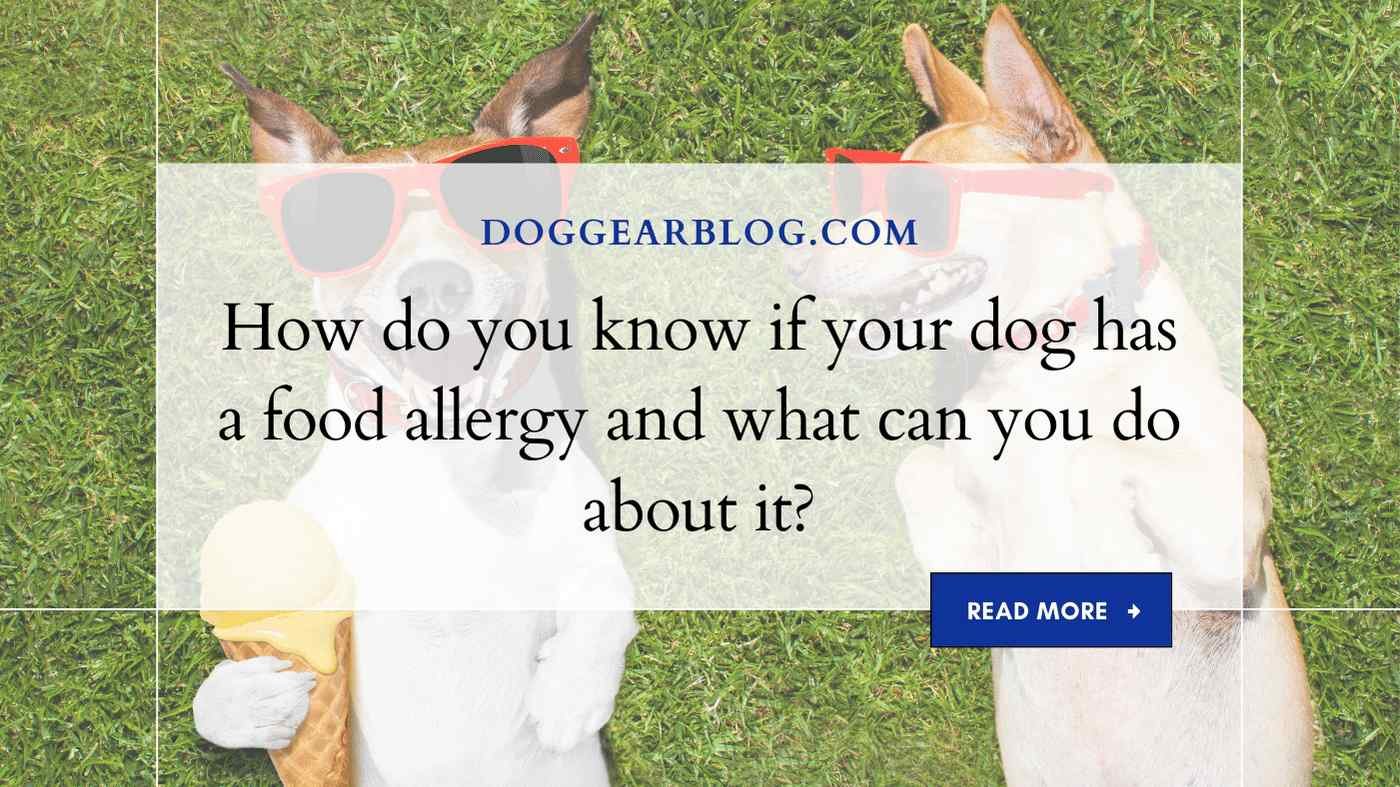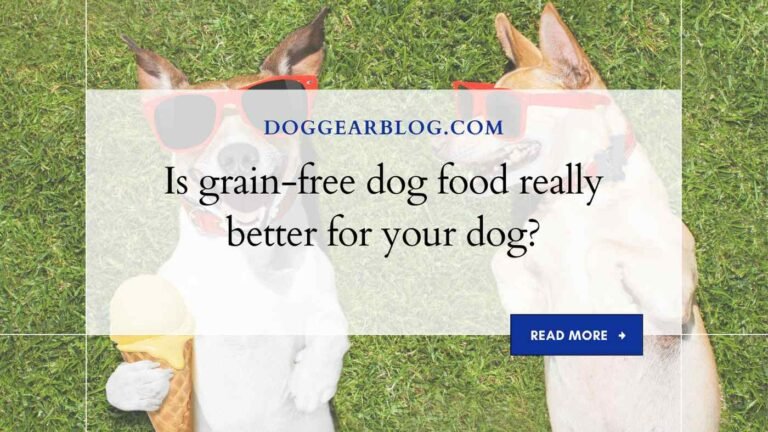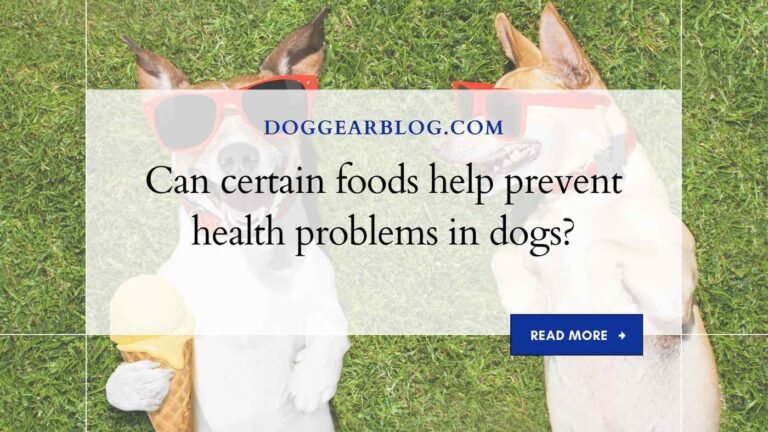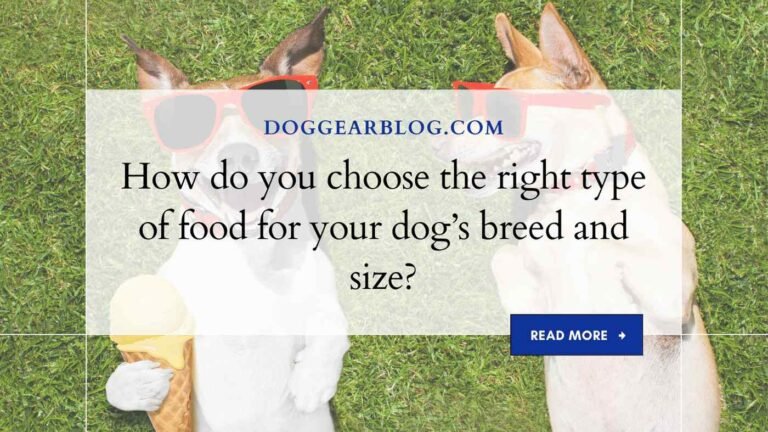How do you know if your dog has a food allergy and what can you do about it?
As a pet owner, nothing breaks your heart more than seeing your furry friend suffer. And while allergies are a common human struggle, did you know that they can affect our four-legged companions too? One of the most prevalent types of allergies in dogs is related to their food.
That’s why it’s essential to know how to spot the signs and symptoms of a food allergy in your dog and what steps you can take to help alleviate their discomfort. So grab a treat for your pup, settle in, and read on as we explore everything you need to know about detecting and managing food allergies in dogs!
What is an Allergy?

An allergy is an abnormal response by the body to a particular substance. In most cases, allergies are caused by exposure to allergens, such as foods, plants, or even animals. The immune system overreacts and creates an inflammation in the body. Symptoms of an allergy can vary from person to person and from one allergic reaction to the next.
They may include sneezing, itchy eyes, a runny nose, diarrhea, vomiting, stomach pain and hives. If you think your dog has food allergies, it’s important to get them checked out by a veterinarian. There are many things you can do to help mitigate your dog’s allergic reactions and prevent them from happening in the first place.
Some common food allergies in dogs include wheat, soybeans, dairy products (including milk), corn and eggs. It’s important to know what might cause your dog problems so that you can be careful about feeding them those foods. You can also try reducing or eliminating exposure to allergenic foods for your dog at home using food elimination diets or Specific Diet Plans developed specifically for food allergies in pets.
If all else fails and your dog has serious symptoms due to an allergy (as opposed to just having occasional sensitivity), then doctor may prescribe medication such as prednisone or cromolyn sodium which will suppress their immune system before exposing them again to the allergen they’re sensitive too .
Types of Allergies
There are many different types of allergies, but allergies to food are the most common. Some breeds, likeBoxers, are more likely to have food allergies than others. Food allergies can cause hives, eczema, and other skin troubles in dogs. If your dog has food allergies, it’s important to find out what is causing the allergy and take steps to prevent it from happening again. There are several ways to detect a food allergy in your pet:
A blood test can help identify foods that are causing a allergic reaction.
An elimination diet can help determine which foods are causing your dog problems.
If you suspect that your dog has a food allergy, start by eliminating one or more of the potential allergens from his diet for 10-14 days. If your dog does not have any negative reactions during this time period, he may be able to eat some of the eliminated ingredients without problem. If your dog does have negative reactions after eating one of the eliminated allergens, it is likely that he has a food allergy and needs to avoid that ingredient completely.
After excluding all known allergens from his diet and monitoring his symptoms for at least four weeks, try feeding him small amounts of the potential allergen once a day for two weeks to see if this reintroduction causes an allergic reaction. If there is no reaction after two weeks of gradual reintroduction, then your dog may be able to eat the allergen without problem. However, if he has an allergic reaction, then he should avoid eating that food entirely.
Causes of Allergies in Dogs
There are many potential causes of allergies in dogs, but most cases are related to environmental allergens. Some breeds are more prone to developing allergies, but it is not clear why. Certain foods can also contribute to allergies, but the cause is unknown.
Some common environmental allergens that can cause problems for dogs include:
animal dander – dead skin cells from pets and other creatures
- dead skin cells from pets and other creatures house dust mites – microscopic creatures that live on surfaces and can cause asthma in some people
- microscopic creatures that live on surfaces and can cause asthma in some people plants – pollen from trees, weeds, or grasses can trigger allergic reactions in dogs
Food allergy problems in dogs are usually related to one or more food items. If your dog has a true food allergy, eating that specific food will create an allergic reaction. Food allergies are not always predictable; sometimes a dog will react to a variety of foods.
If your dog reacts to a certain type of food even after trying various others, this may be suggestive of a food allergy. However, it’s important to note that not all cases of food intolerance or occasional vomiting in dogs are due to allergies; other conditions like gastroenteritis or diet changes such as switching from kibble to canned food may also be involved.
In many cases, though no definitive diagnosis has been made, there is evidence that suggests afood allergy might be at play.
Here are some possible symptoms your dog might show if they have a food allergy:
vomiting
diarrhea
gastroenteritis
rashes
itching
weakness
Symptoms of Food Allergies in Dogs

Food allergies in dogs can beLife-threatening. Symptoms of food allergies in dogs may include: difficulty breathing, panting, diarrhea, vomiting, fatigue, skin rash or itching, seizures and even death. If you think your dog may have a food allergy, the first step is to take him to a veterinary professional for an evaluation.
There are various tests that can be done to determine whether your dog has a food allergy. Treatment typically involves removing the allergenic food from the diet and providing cross-sensitivity testing as needed.
Testing for Food Allergies in Dogs
There is no one hard and fast answer to whether or not a dog has a food allergy, as the answer really depends on a number of individual factors. However, some general signs that may point to a food allergy in a dog include excessive scratching or licking at the skin near the mouth, hacking and coughing up saliva or phlegm, vomiting, diarrhea, and seizures.
If you think your dog may have a food allergy, it’s important to consult with your veterinarian to get an accurate diagnosis. There are certain foods that are commonly associated with allergies in dogs, so if your pet is allergic to one of these foods (or if you’re unsure about which foods are safe for your pet), it’s important to monitor his diet carefully and avoid giving him any of those items.
Once an assessment has been made and the food allergies have been ruled out, there are steps that can be taken to help manage the situation and make sure that the pet remains comfortable during flare-ups. In some cases, dietary adjustments may be all that is necessary to manage symptoms; in other cases additional treatments such as injections or tablets may be needed.
Treatment Options for Food Allergies in Dogs
There is no one-size-fits-all answer to this question, as the treatment options for food allergies vary depending on the type of food allergy your dog has and the severity of the allergy. However, some common treatment options include dietary changes, medication, and immunotherapy.
Dietary Changes: One of the simplest and most common treatments for food allergies in dogs is dietary restriction. This means altering your dog’s diet to remove all types of foods that are known to cause allergic reactions.
Some commonly eliminated foods include wheat, corn, soy, dairy products (including milk), fish, poultry, eggs, and nuts. It is important to work closely with a veterinarian to create a customized diet that is safe and effective for your dog.
Medications: Certain medications can help reduce the symptoms of food allergies in dogs. These medications can be prescribed by a veterinarian or purchased over-the-counter. Common medications used to treat food allergies in dogs include steroids (such as prednisone) and antihistamines (such as fexofenadine).
Immunotherapy: Immunotherapy is a type of treatment used to manage food allergies in dogs. Immunotherapy involves injecting your dog with allergens (such as milk proteins) under controlled conditions so that his immune system will learn how to tolerate these allergens.
This therapy can be successful in some cases but should not be used in cases where severe health problems may occur if exposure to the allergen continues (such as an aphylaxis). It is important to consult with a veterinarian before initiating immunotherapy treatment as it can be quite costly and requires regular visits.
Different types of food allergies
Food allergies in dogs can be debilitating and life-threatening, so it’s important to understand the different types of food allergies your dog may have.
IgE-mediated food allergies are the most common type of food allergy. These allergies are caused by the dog’s immune system reacting to particular proteins found in food. Symptoms typically include itching, hives, vomiting, diarrhea or constipation, and gas. In severe cases, anaphylaxis can be life-threatening.
Testing for IgE-mediated food allergies is done using a blood test or skin prick test. Treatment depends on the severity of the allergy, but often involves avoiding the allergen in question.
Food intolerance is another type of food allergy that occurs when a dog has an inability to digest certain proteins found in food. Symptoms may include vomiting after eating, poor energy levels and weight loss, oral tingling or numbness after eating, and urinary problems such as infections and renal failure.
Testing for food intolerances is done using a dietary analysis or custom designed elimination diet. Treatment usually involves gradually introducing the allergen into the dog’s diet over a period of time and rotating other foods throughout to ensure continuedGood health for your canine companion begins with understanding what foods might set him off!
Conclusion
For many dog owners, discovering that their canine companion has a food allergy can be alarming and frustrating. Unfortunately, not all food allergies are immediately visible to the naked eye, making it difficult for some pet owners to determine whether or not their dog has an allergy to a particular food.
If you think your dog may have a food allergy, there are several things you can do in order to figure out what is causing the problem and take appropriate action. Remember: if you cannot determine the cause of your dog’s adverse reaction to certain foods, then it is best to avoid giving them those foods altogether.






